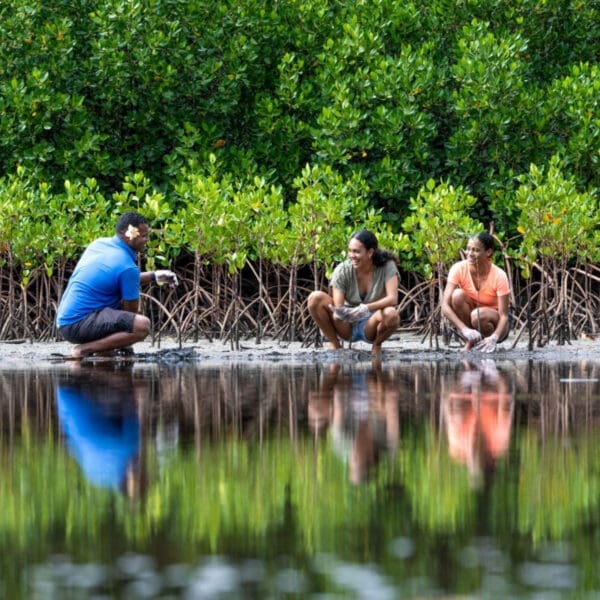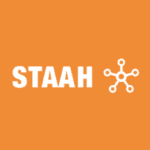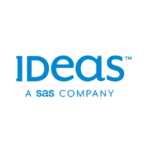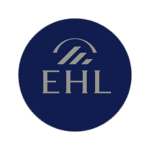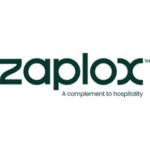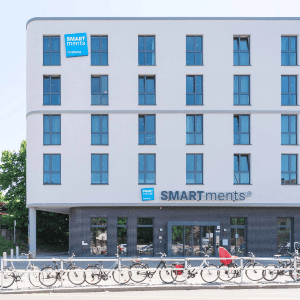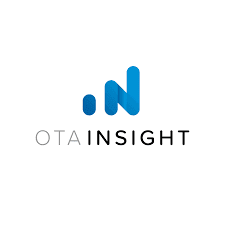 As vaccination programmes continue to find success against Covid-19, lockdown policies are easing, and hotels are reopening. Tentative steps are being made toward the resumption of international travel – there is now significant domestic leisure travel taking place in a number of countries. With consumers starting to make travel plans, hoteliers should begin preparing their strategy for reopening and a wider recovery.
As vaccination programmes continue to find success against Covid-19, lockdown policies are easing, and hotels are reopening. Tentative steps are being made toward the resumption of international travel – there is now significant domestic leisure travel taking place in a number of countries. With consumers starting to make travel plans, hoteliers should begin preparing their strategy for reopening and a wider recovery.
Budget season commences in June, an exhausting period for commercial teams, involving rounds of discussion and negotiation. In 2021, add in reopening during a global pandemic to the mix, paired with unpredictable demand and it becomes a wholly different prospect.
The hospitality industry is in many ways unrecognisable from how it looked in 2019. It will likely have changed forever and there are several new concepts and guidelines to take into account when reopening your hotel. These range from operations and training, to marketing and new tech solutions. As demand begins to pick up in your market, competition will be fierce and the hoteliers who have a well-conceived strategy in place will win business from their competitors. The road to recovery is paved with a host of challenges; that’s why starting strong is vital to future success.
Here are 7 considerations to take into account when reopening your hotel and budgeting for 2022 following the pandemic:
#1: Safety and service
The most noticeable changes you are likely to encounter when reopening your hotel are making your property Covid safe and secure. In many countries, strict government guidelines are still in place in most countries, and these mandates will need to be adhered. To ensure guests feel they are adequately cared for, there are also additional steps that will need to be implemented.
For example, one protocol which has endured the entirety of the pandemic is social distancing. Until government policy disbands the idea, it is likely to remain for a short while longer. To protect both staff and guests, you can minimise face-to-face contact by implementing measures such as: limiting the number of staff and guests in communal spaces, virtual check-in, paperless payment and self-service apps, social distancing markers and installing plexiglass at the front desk.
There are new technology solutions available which help alleviate the issue as well. Making hospitality nearly contactless seems alien, but keeping visitors healthy and safe is now key to guest satisfaction. Hotels can employ guest messaging services, which enable two-way communication between hotel staff and guests, pre, post and during their stay. Guests are more informed of new procedures and policies prior to arrival and throughout their time at the hotel. It reduces the need for in-person interaction as guests can make requests, complaints or ask for recommendations via the messaging service and don’t congregate at the front desk.
New technology will help guests and staff to a considerable degree, but more established modes of communication also need to be updated. A lot of signage around the property will have to be revised and newly installed, notifying guests of guidelines and rules, such as housekeeping procedures, capacity limits, mask requirements and so on. Your guest’s onsite experience is most valuable, but their online experience is important too. You must ensure your website, social media channels and email correspondence notify lookers, upcoming guests and past customers of your Covid protocols to develop trust.
#2 Cleanliness and housekeeping
Hygiene will also continue to be top of mind for guests – a clean, sanitized room, along with a hotel’s communal spaces are essential for hotels to build confidence. Notifying guests as to what extent you are cleaning and sanitising the hotel will be critical to peace of mind and helping to secure bookings.
A good place to start is by monitoring the most recent regulations regarding sanitary standards for Covid and reaching out to industry associations to understand what new cleaning protocols are known as best practice. For example, the American Hotel & Lodging Association established a Safe Stay Advisory Council to develop industry standard cleaning protocols.
Keeping an updated inventory of items such as masks, sanitiser, personal protective equipment and new specialist cleaning equipment is critical. It is equally as important to consider installing sanitiser stations around your hotel, ensure high-footfall areas are cleaned more frequently and air conditioning units are correctly circulating air. It will also be wise to remove high-touch items like magazines and pamphlets and instead produce virtual guides, and have guests use digital key-cards via their smartphone.
As occupancy levels start to increase the housekeeping department will be under immense scrutiny to guarantee rooms are clean and sanitised to new industry standards. With it all tracked and recorded. This will be in-tandem with making sure housekeeping staff keep face-to-face interaction with each other and their guests to an absolute minimum.
With a leaner staff in place, it is imperative to maximise the efficiency of the housekeeping department. You can centralise housekeeping and maintenance operations with new technology solutions. There are tools that provide digital checklists, cleaning timestamps and internal communication channels, so staff know which rooms need cleaning and inspecting, at which times – protecting guests and fellow staff members alike.
#3 Recruiting and training staff
The pandemic has had a devastating impact on the hospitality industry’s workforce. It was well documented that hotels were operating with skeleton staff, with millions of jobs at risk and huge numbers furloughed. Now, as confidence is returning and hotels are opening, another issue is developing – a shortage of hospitality and particularly housekeeping staff.
It is widely reported in the UK, USA and Australia that a once thriving workforce has been largely decimated and many of the workers who were let go have now found alternative employment. Whereas other seasonal or student staff have moved away, and foreign nationals have returned overseas. If there isn’t the necessary number of housekeeping staff to clean rooms for example, a hotel can’t adhere to safety standards that allow opening to capacity. Hoteliers must plan for a scenario in which their property may not open at full capacity until staff numbers are at an adequate level. This should be factored into budget projections when reopening and for the following year.
Most major chains have introduced hygiene initiatives which include rigorous cleaning protocols and new staff training. Such as Hyatt’s Global Care & Cleanliness Commitment and Hilton’s CleanStay programme. Day-to-day hotel operations have changed significantly, this will require extensive and ongoing training and onboarding for current, returning and new staff. This may include, but is not limited to, the creation of playbooks and manuals, the introduction of a new training platform and hiring a Hygiene Officer – all of which must be budgeted for.
#4 Reviewing and optimising budget
As guests begin to arrive during the current phase of hotel reopening, and occupancy steadily increases, attention will also turn to thoughts about the future, namely: how best to apportion a streamlined budget while maximising revenue in 2022?
There is certainly room for optimism, but when it comes to budgeting and forecasting for 2022 hoteliers should stay pragmatic; every dollar must be accounted for. Until profitability resumes it will still be a matter of limiting unnecessary expenditure, effectively managing payroll and continuing to negotiate the best contracts from suppliers. Remaining flexible, confronting challenges as they arise and taking opportunities to drive revenue.
Playing a guessing game with your budget for 2022 is a rather reckless strategy. Every decision you take for 2022’s budget plan should be grounded in accurate, reliable, and up-to-date data. With the right tech tools in place, hoteliers can align their goals and deliver a budget that minimises expenditure while allowing commercial teams to act decisively to pursue all available revenue opportunities.
Forecasting for 2022’s budget has become incredibly problematic: typical booking behaviour and demand drivers have changed drastically. More specifically, on-the-books, historical data, and year-over-year trends are far less effective when painting a picture of future demand for your property. The use of a forward-looking data solution is now essential – not only to monitor and capture demand when re-opening and moving through recovery but also when budgeting for 2022. Market Insight provides an understanding of demand, 365 days in advance, so hoteliers can better forecast and optimise budget where it really matters.
#5 Monitoring demand
Pent-up traveller demand is almost tangible, and domestic leisure travel is starting to flourish in a number of markets. Hoteliers will be keeping a constant check on travel restrictions both, in their domestic market and international source markets. The sooner you are able to gain an understanding of traveller intent, you can start strategising to capture upticks in demand ahead of your competition.
Covid-19 erased typical traveller demand patterns, which hoteliers used to rely on to forecast. In current market conditions making future demand predictions based on traditional demand drivers and historical data points is now nearly impossible, and booking behaviour is volatile with shortened booking windows. Travellers are sometimes booking within days of arrival, making it difficult to use OTB data to make decisions. Keeping an eye on the news for travel updates, monitoring web traffic and Google trends can all be helpful to try and uncover traveller intent. However, these are all time consuming activities and ultimately do not provide the basic insights in real-time to accurately predict traveller demand in such unstable market conditions.
During reopening and into 2022, any positive shift in demand needs to be capitalised on. During this period of heightened competition and relatively low demand, a forward-looking data tool may be the answer to help you gain a competitive advantage. By monitoring top-of-funnel data points, like hotel and flight search, cutting-edge tools like Market Insight recognises demand changes in advance and anticipates future demand levels for your area. It then provides location-specific, segmented demand insights for commercial teams to empower more informed pricing and marketing decisions to drive business growth.
#6 Effective marketing
Hotel marketers are adapting strategies to meet the needs of an ever-changing hospitality landscape. Whether it be marketing for reopening or for wider recovery in 2022, it will be a continual process of learning and adjusting, with an ongoing need to remain agile. Marketing budgets will certainly be limited compared to pre-Covid due to pressure from investors, owners and general managers to control spending. But a sound marketing strategy will be fundamental to success when tourism recovers, in what will be a new and more competitive marketplace.
Initially, evaluate what marketing activity drove bookings pre-covid, so your tactics are appropriate. To be sure you are optimising your marketing budget to its fullest you should ground your marketing decisions in data. While preparing to reopen, hotel marketers can refine website content and develop a distinct value proposition for customers booking directly on the website. Start cultivating relationships with past customers and online followers through email and social media campaigns. On these channels you can highlight cancellation policies, cleanliness standards, unique hotel amenities, and promotions and offers, like advance purchase rates and bed and breakfast. Once fully open, marketers can run retargeting campaigns to try and convert interested browsers and even add to the booking value with upselling options.
For most, the earliest signs of increasing demand will come from the domestic market. That’s where marketers should be directing their opening efforts, incorporating exclusive offers and staycation packages. As international markets open up around the world, you’ll want to know who to target with your budget when delivering costly advertising campaigns. Trust Market Insight buyer intent data to show you which guests are willing to travel to your destination, from which country or airport, and when. You can then base marketing campaigns on these insights, providing promotions for the correct dates and length of stay, based on traveller search origin. Spotting and acting on demand trends before the competition could be the difference in maximising revenue in recovery.
#7 Pricing and distribution
When reopening, Revenue Managers will have to be more agile than ever with their pricing and distribution strategies. Demand will remain relatively low until the majority of international markets reopen and corporate and MICE travel resumes. When you can identify positive demand shifts with a forward-looking data solution you should use a market-leading rate shopper to constantly review your rates and make sure you are pricing competitively compared to your competitors.
Sometimes rates may need to be lowered and promotions and discounts offered, but refrain from entering pricing wars and ‘rate dumping’ to try and drive occupancy. You need to effectively balance volume and rate to maximise revenue at this crucial time. In recovery, price is unlikely to stimulate demand to the level it once did – consumers will be considering a wide variety of factors such as cleanliness, safety, reviews, and ranking, which all hinge on trust.
Driving direct channel bookings on your website is essential for overall profitability. As mentioned above, Market Insight can make sure your marketing budget is being used effectively to drive the right customer to your website. But in this new business climate exposure is also key.
Assess the performance of each of your channels with a business intelligence tool and decide what is your optimal channel mix, including which OTA and metasearch sites to continue to list on. Upholding and improving your hotel’s online visibility when consumers are looking to purchase will help to drive bookings and revenue. However, when working with OTAs and metasearch sites it is imperative to maintain rate parity. Rate Insight and Parity Insight can help you manage your online partnerships and identify parity issues in real-time, up to a year in advance to ensure you’re not losing out on valuable revenue in recovery.
Conclusion
As hoteliers reopen their properties and begin budgeting for another year of relative uncertainty, they have to navigate unfamiliar territory. The general consensus is to hope for the best but prepare for the worst, with various contingency plans in place. There is no playbook, no crystal ball to see what 2022 will bring. Yet there are new procedures, protocols and strategies to implement until the Covid-19 pandemic is fully behind us.
The best asset in making reopening and recovery a success is accurate and reliable data. By making smarter technology choices now, you can give yourself the best opportunity to get ahead of the competition, with informed data-driven decision making. Hoteliers will also need to remain flexible in recovery – ready to adapt and adjust to market changes. This will require continual monitoring and optimising of business performance. A business intelligence solution like Revenue Insight unlocks a hotel’s PMS data to deliver insights that empower you to make better decisions to maximise revenue.
With market leading tech solutions in place to guide you through recovery, you can identify opportunities and be prepared to take advantage of demand rebounds to drive revenue. Hoteliers who can make confident, proactive decisions that are grounded in data, will emerge from this reopening and budgeting period with the fundamental foundations needed for success in recovery – and well beyond into the future.





